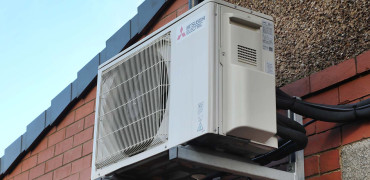I’ve just spent the weekend at the Ideal Home Show in London’s Olympia talking to consumers about heat pumps and two things really stood out for me.
The first was how many more people know about heat pumps now or have at least heard of them, compared to last year’s Show.
For me, that means that the message is getting through about heat pumps being the future, as more and more people realise that we simply have to stop ‘burning stuff’ to keep our homes warm.
I was only there for two days out of a 17-day show, but if that level of interest is maintained, then I think the heat pump industry is highly likely to break through 100,000 installations this year.
The market is there and the technology is fully tried, tested and ready to go.
The future is out there
The second thing that struck me, was that a number of gas engineers came to talk to me to ask what they needed to do to become a heat pump installer.
And nothing could be simpler.
One of our Directors was asked recently about the shortage of heat pump installers and whether this would be a barrier to increasing the number of installations.
His answer was very simple. There is already a heat pump engineer on every street. They’re just called a gas installer at the moment.
So, this raises the issue of training which is why this article has a picture of two of my colleagues collecting the Training Provider of the Year Award at the recent National ACR and Heat Pump Awards in Manchester.
Simple steps to training
We’ve completely revamped our training so a lot of it can be done at a time to suit the engineer and be completed at their own pace.
This means that existing heating engineers can learn about the nuanced differences between gas heating and heat pumps, as well as understand how to add to the skills they already possess.
Once they’ve completed a few online sessions, they can join me and my ‘award-winning’ colleagues in our virtual classroom, where they can test their knowledge, learn more about the range of renewable options, and quiz our trainers.
They can also look inside our equipment using virtual reality to help explain how much engineering has gone in to manufacturing these heat pumps so that they work in our temperate climate.
Finally, there is always the option to come into one of our training centres to get the spanners out and learn on the actual equipment.
Retrofit challenge
And we do need to keep increasing the number of engineers installing heat pumps which is why we will continue to develop and innovate our training courses.
There are millions of homes and commercial properties that need to have their heating upgraded and there are now heat pumps that are ideal for the retrofit market.
The market is there and the technology is fully tried, tested and ready to go.
However, there is one area we do need to work on and that is countering the myths that still exist about heat pumps because a correctly designed, installed and commissioned system can heat just about any home or building.
There are several heat pumps that will deliver water at 70°C or even higher, while working with small bore pipework, so there really aren’t many situations were a heat pump can’t be used – They’re even being used at Chester Zoo to keep the endangered rhinos warm.
And as George Clarke said himself when he visited the zoo “If a heat pump can heat a rhino house then it can heat just about any home”.
Ben Bartle-Ross is a technical trainer at Mitsubishi Electric




